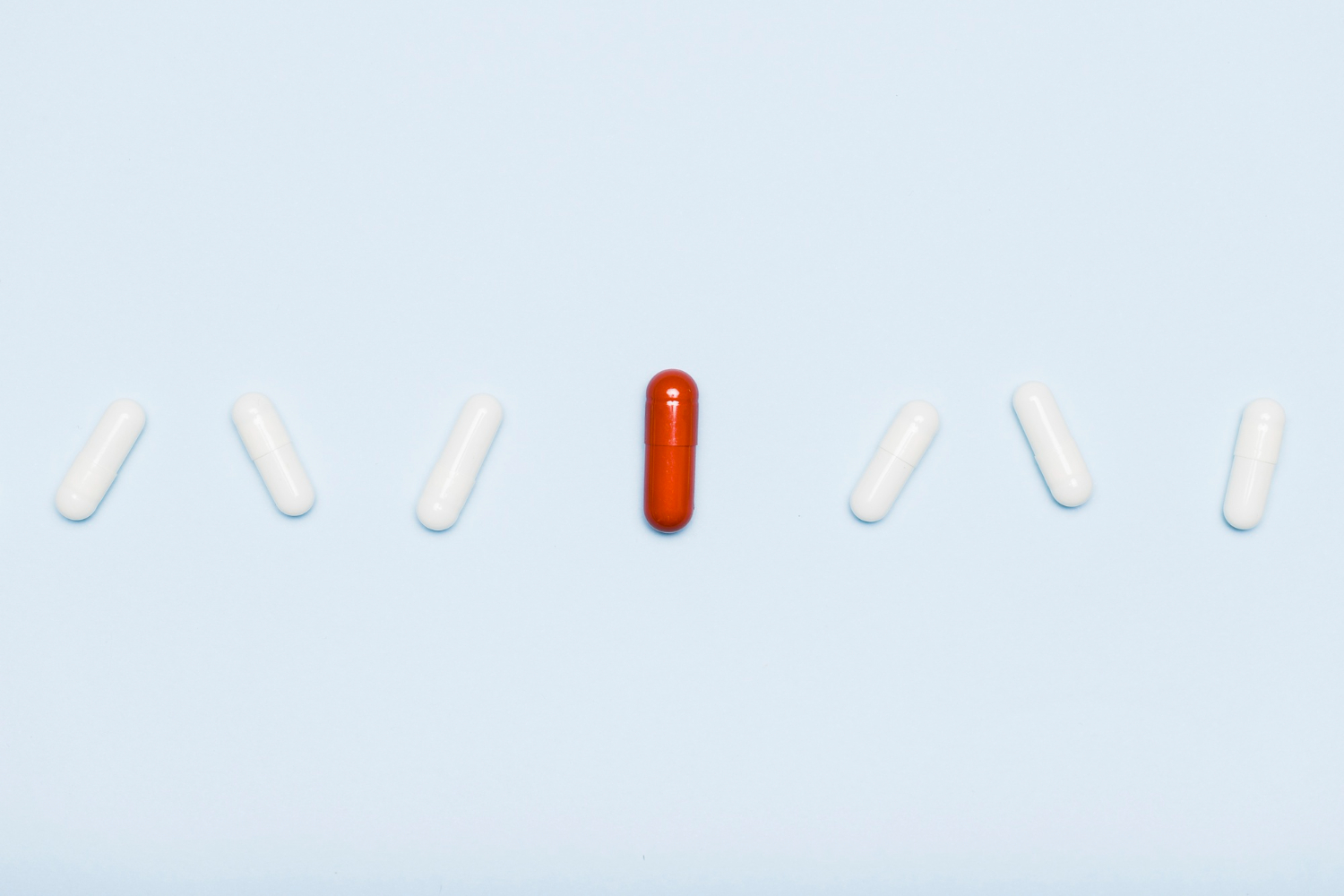Drug Abuse in the US: An Overview
Drug abuse continues to be a significant issue in the United States, with far-reaching consequences for individuals, families, and communities. Understanding the scope of drug abuse and its impact on society is crucial for developing effective prevention and treatment strategies.
The Scope of Drug Abuse
The extent of drug abuse in the US is staggering, highlighting the need for comprehensive intervention programs. Here are some startling statistics that shed light on the prevalence of drug abuse:
These statistics underscore the urgent need to address the issue of drug abuse in the country, not only for the well-being of individuals but also for the overall societal welfare.
Impact on Society
Drug abuse has a profound impact on society, affecting various aspects of individuals' lives and communities as a whole. Here are some key ways in which drug abuse impacts society:
- Healthcare System: Drug abuse places a significant burden on the healthcare system, with increased emergency department visits, hospitalizations, and treatment costs. Substance abuse-related illnesses and injuries also contribute to the strain on medical resources.
- Crime Rates: Drug abuse is closely linked to criminal activities, including drug trafficking, theft, and violence. The cost of law enforcement, legal proceedings, and incarceration related to drug-related crimes is substantial.
- Family and Relationships: Drug abuse often tears families apart, causing emotional distress and strained relationships. Children growing up in households affected by drug abuse may experience neglect, abuse, and instability, leading to long-term consequences.
- Education and Workforce: Substance abuse negatively impacts educational attainment and employment opportunities. Individuals struggling with drug abuse may experience difficulties in maintaining employment, leading to financial instability and reduced productivity.
- Community Well-being: Drug abuse has a ripple effect on communities, eroding social cohesion and contributing to the deterioration of neighborhoods. Increased drug-related crime rates and the associated fear can undermine community safety and overall quality of life.
Understanding the scope of drug abuse and its impact on society is essential for implementing effective prevention strategies, supporting individuals in recovery, and promoting a healthier and safer society as a whole. By addressing drug abuse comprehensively, we can work towards reducing its devastating effects and fostering a better future.
Startling Statistics on Drug Abuse
When examining the issue of drug abuse in the United States, it is essential to take a closer look at some of the most surprising statistics surrounding this problem. Three key areas that stand out are the opioid epidemic, youth substance abuse, and prescription drug misuse.
Opioid Epidemic
The opioid epidemic has had a devastating impact on communities across the United States. Let's take a look at some startling statistics:
These statistics highlight the severity of the opioid crisis and the urgent need for effective prevention, treatment, and support initiatives.
Youth Substance Abuse
Substance abuse among young individuals is a pressing concern, and the statistics reveal some alarming trends:
These numbers emphasize the need for comprehensive prevention programs and educational initiatives to address substance abuse among youth effectively.
Prescription Drug Misuse
Prescription drug misuse has become a significant concern in the United States, leading to various health and social issues. Consider the following statistics:
These statistics shed light on the widespread nature of prescription drug misuse and its impact on individuals, families, and the economy.
By understanding these startling statistics, we can better comprehend the magnitude of the drug abuse problem in the United States. It is crucial to continue raising awareness, implementing prevention programs, and providing accessible treatment options to combat this complex issue.
[^1^]: Centers for Disease Control and Prevention (CDC). (2021). Drug Overdose Deaths. Retrieved from [link to CDC website] [^2^]: International Narcotics Control Board (INCB). (2020). Report of the International Narcotics Control Board for 2019. Retrieved from [link to INCB website] [^3^]: National Institute on Drug Abuse (NIDA). (2020). Prescription Opioids and Heroin Research Report. Retrieved from [link to NIDA website] [^4^]: Centers for Disease Control and Prevention (CDC). (2020). Youth Risk Behavior Surveillance System (YRBSS). Retrieved from [link to CDC website] [^5^]: Centers for Disease Control and Prevention (CDC). (2020). Youth Risk Behavior Surveillance System (YRBSS). Retrieved from [link to CDC website] [^6^]: Substance Abuse and Mental Health Services Administration (SAMHSA). (2020). 2019 National Survey on Drug Use and Health (NSDUH). Retrieved from [link to SAMHSA website] [^7^]: Substance Abuse and Mental Health Services Administration (SAMHSA). (2020). 2019 National Survey on Drug Use and Health (NSDUH). Retrieved from [link to SAMHSA website] [^8^]: Substance Abuse and Mental Health Services Administration (SAMHSA). (2020). Key Substance Use and Mental Health Indicators in the United States: Results from the 2019 National Survey on Drug Use and Health. Retrieved from [link to SAMHSA website] [^9^]: Florence, C., Zhou, C., Luo, F., & Xu, L. (2016). The Economic Burden of Prescription Opioid Overdose, Abuse, and Dependence in the United States, 2013. Medical Care, 54(10), 901–906.
Demographic Trends
Understanding the demographic trends related to drug abuse in the United States is crucial for developing effective prevention and treatment strategies. Examining the age groups affected, gender disparities, and socioeconomic factors can provide valuable insights into the complex nature of drug abuse.
Age Groups Affected
Drug abuse can affect individuals of all ages, but certain age groups are more vulnerable than others. Here is a breakdown of the age groups most affected by drug abuse:
It is alarming to see that a significant proportion of young adults and adults are impacted by drug abuse. This highlights the need for targeted interventions and education programs to address substance abuse among these age groups.
Gender Disparities
Gender disparities exist when it comes to drug abuse, with variations in the types of substances used and the prevalence of abuse. Here is a breakdown of the gender disparities in drug abuse:
While males tend to have higher rates of alcohol and marijuana use, females are more likely to misuse prescription drugs. These gender differences emphasize the importance of addressing the unique needs and risk factors associated with drug abuse in both males and females.
Socioeconomic Factors
Socioeconomic factors play a significant role in drug abuse trends. Individuals from disadvantaged socioeconomic backgrounds may face additional challenges that contribute to higher rates of substance abuse. Here are some key socioeconomic factors related to drug abuse:
These socioeconomic factors can create a cycle of substance abuse, as individuals may turn to drugs as a coping mechanism or face barriers in accessing treatment and support services.
By understanding the demographic trends associated with drug abuse, policymakers, healthcare professionals, and communities can develop targeted strategies to address the specific needs of different age groups, genders, and socioeconomic backgrounds. It is essential to implement prevention programs, increase access to treatment, and provide support to individuals struggling with drug abuse in order to combat this public health issue effectively.
Consequences of Drug Abuse
Drug abuse has far-reaching consequences that impact individuals, communities, and society as a whole. In this section, we will explore the health implications, economic burden, and legal ramifications associated with drug abuse.
Health Implications
Drug abuse takes a significant toll on the physical and mental health of individuals. Substance abuse can lead to a range of health problems, including:
- Addiction and dependence on drugs
- Increased risk of overdose and death
- Mental health disorders, such as anxiety and depression
- Infectious diseases, like HIV/AIDS and hepatitis, due to needle-sharing
- Respiratory problems, cardiovascular issues, and organ damage
- Cognitive impairment and learning difficulties
The health consequences of drug abuse not only affect the individual but also place a strain on healthcare systems, families, and communities.
Economic Burden
Drug abuse carries a substantial economic burden, impacting both individuals and society at large. The costs associated with drug abuse can be categorized into direct and indirect costs:
- Direct Costs: Direct costs include expenses related to healthcare, treatment programs, and law enforcement efforts. These costs encompass medical treatments, emergency room visits, rehabilitation programs, and the criminal justice system.
- Indirect Costs: Indirect costs refer to the broader economic impact of drug abuse. These costs include lost productivity, decreased workforce participation, and the strain on social services. Additionally, drug-related crimes and the burden on the legal system contribute to the economic consequences.
The economic burden of drug abuse is staggering. According to a report by the National Institute on Drug Abuse (NIDA), the estimated annual cost of substance abuse in the United States exceeds $740 billion when considering both direct and indirect costs.
Legal Ramifications
Drug abuse often leads to legal consequences for individuals involved in illicit drug activities. The legal ramifications of drug abuse can vary depending on the drug, the quantity involved, and the jurisdiction. Common legal consequences include:
- Arrest, imprisonment, and criminal records
- Fines, probation, and mandatory drug testing
- Loss of employment and educational opportunities
- Restrictions on professional licensing and certifications
The legal system aims to deter drug abuse and protect society from the harmful effects associated with drug-related crimes. However, it is important to note that the approach to drug offenses may vary across different jurisdictions.
Understanding the health implications, economic burden, and legal ramifications of drug abuse underscores the urgent need for prevention, education, and treatment initiatives. By addressing these consequences, society can work towards reducing the impact of drug abuse and supporting individuals in their journey towards recovery.
Prevention and Treatment Efforts
In order to address the alarming statistics surrounding drug abuse in the US, various prevention and treatment efforts have been implemented. These initiatives aim to tackle the root causes of drug abuse, provide support to individuals struggling with addiction, and raise awareness about the importance of seeking treatment. Three key areas of focus in these efforts are public health initiatives, rehabilitation programs, and the availability of support and resources.
Public Health Initiatives
Public health initiatives play a crucial role in preventing drug abuse and promoting overall well-being. These initiatives focus on educating the public about the risks associated with drug abuse, implementing prevention programs in schools and communities, and advocating for policies that support addiction treatment and recovery.
By targeting both young and adult populations, public health initiatives aim to create a culture of prevention and reduce the prevalence of drug abuse.
Rehabilitation Programs
Rehabilitation programs are essential in helping individuals overcome drug addiction and regain control of their lives. These programs provide a structured and supportive environment where individuals receive professional treatment, counseling, and support. Rehabilitation can take place in various settings, including inpatient facilities, outpatient clinics, and community-based programs.
Rehabilitation programs offer a comprehensive approach to addiction treatment, addressing the physical, psychological, and social aspects of drug abuse.
Support and Resources
Access to support and resources is crucial for individuals seeking help for drug addiction. These resources can provide valuable information, guidance, and assistance throughout the recovery journey. Support networks, helplines, and online platforms offer a safe space for individuals to connect with others facing similar challenges and access the help they need.
These support systems and resources play a vital role in helping individuals navigate the recovery process and maintain long-term sobriety.
By combining efforts in public health initiatives, rehabilitation programs, and the availability of support and resources, there is hope for reducing the impact of drug abuse in the US. These efforts aim to prevent drug abuse, provide effective treatment options, and offer ongoing support for individuals and communities affected by addiction.
Moving Forward
As the issue of drug abuse continues to impact communities across the United States, it is crucial to take proactive steps to address this problem. Moving forward, there are three key areas that require attention: addressing stigma, promoting education and awareness, and advocating for policy changes.
Addressing Stigma
One of the significant barriers to effectively combating drug abuse is the stigma associated with it. Society's negative perception of individuals struggling with addiction can prevent them from seeking help and accessing necessary resources. To address this issue, it is essential to promote empathy, understanding, and compassion for those affected by drug abuse.
By challenging stereotypes and promoting a non-judgmental approach, we can create an environment where individuals feel comfortable seeking support and treatment. Education campaigns that highlight the complex nature of addiction and emphasize that it is a treatable condition can help break down the stigma surrounding drug abuse.
Promoting Education and Awareness
Education and awareness play a crucial role in preventing drug abuse and supporting those affected by it. By equipping individuals with accurate information about the risks and consequences of drug abuse, we empower them to make informed decisions and take proactive measures to protect themselves and their communities.
Schools, community organizations, and healthcare providers all have a critical role to play in promoting drug education and awareness programs. These initiatives should focus on providing age-appropriate information, highlighting the dangers of drug abuse, and offering strategies for prevention and intervention.
Advocating for Policy Changes
Policy changes are instrumental in addressing the multifaceted issue of drug abuse. By advocating for evidence-based policies, we can create an environment that supports prevention, treatment, and recovery. Some key policy areas that require attention include:
Advocacy efforts should involve collaboration among policymakers, healthcare professionals, community leaders, and individuals with lived experiences. By working together, we can influence policies that prioritize prevention, treatment, and support for those affected by drug abuse.
By addressing stigma, promoting education and awareness, and advocating for policy changes, we can make significant strides in combating drug abuse in the United States. It is an ongoing process that requires a collective effort from individuals, communities, and government entities. Together, we can create a society that supports prevention, treatment, and recovery for all.
Sources
https://www.coniferpark.com/statistics-about-drug-abuse-in-the-us
https://www.coachellavalleyrecoverycenter.com/five-statistics-about-drug-abuse-in-us
https://www.townsendla.com/statistics-about-drug-abuse-in-the-us
https://www.wellbrookrecovery.com/surprising-statistics-about-drug-abuse-in-the-us


.jpg)








